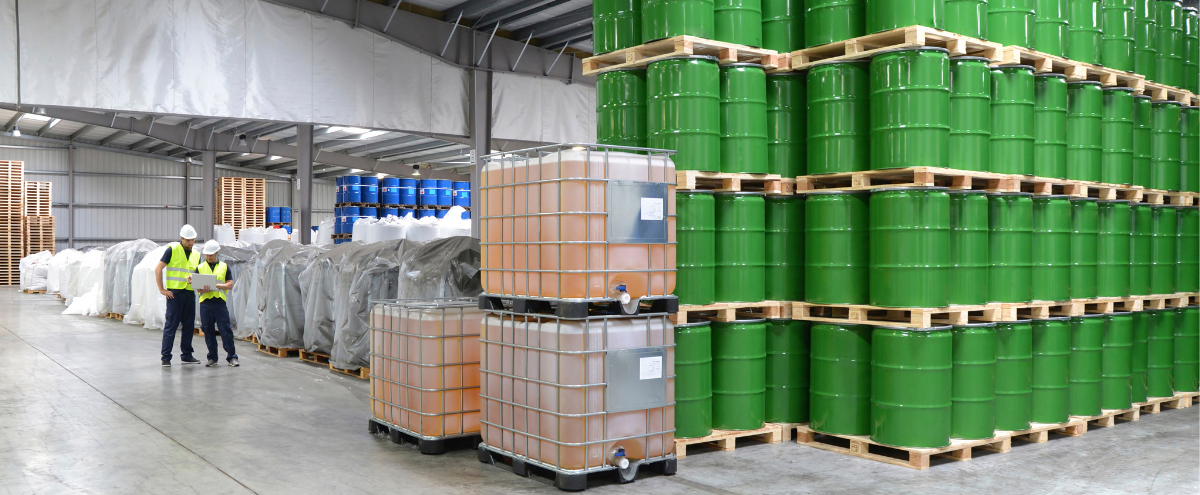
07 Jun An Introduction to Industrial Hygiene
Written by Safety Professionals at SOS Safety Solutions, Brad Penrose.
What is Industrial Hygiene?
Industrial hygiene is the science and practice related to the Anticipation, Recognition, Evaluation, and Control of environmental hazards. These hazards can cause varying levels of health effects, from mild irritation to severe long-term prognosis. Like general Safety practices, Industrial Hygiene follows a formula known as the Hierarchy of Controls.
Hierarchy of Controls
The Hierarchy of Controls is a systematic approach to minimizing exposures to environmental contaminants.
Elimination/Substitution: These are the most effective means of controlling a hazard, as they remove it entirely. While this is ideal, it’s not always possible.
Engineering Controls: While engineering controls may not eliminate the hazard, they will physically prevent or minimize exposure to a hazard. Local ventilation is an example of engineering control. Dust or fumes may still be present, but effective ventilation can greatly reduce any exposure to personnel. Engineering controls are an excellent way to minimize hazards, but may not always be practical, or enough to sufficiently control exposures.
Administrative Controls: Administrative controls are work practices that include things like shift rotation. Shift rotation reduces the amount of time, and therefore the amount of exposure to harmful hazards
PPE: Personal Protective Equipment is the last line of defense to prevent exposure to environmental hazards. PPE should only be used to minimize hazards after all of the above options have been exhausted.
What hazards is Industrial Hygiene trying to control?
There are two broad types of exposure:
- Acute exposure- symptoms from this type of exposure can result from a single exposure.
- Chronic exposure- these type of exposures result in symptoms after repeated exposure. Sometimes days, months or even years later.
In both of these exposures, effects can range from mild to severe.
Chemical Exposures
Gases: these are low-density particles that rapidly diffuse (ex: chlorine)
Vapors: these are liquids with a high vapor pressure (ex: gasoline)
Dust: solid particles that become airborne. This includes powders or other materials that have been sufficiently pulverized. (ex: respirable crystalline silica)
Fumes: vaporized solids that have re-condensed (ex: metal particles that have become airborne during welding)
Mists: liquid droplets that have become aerosols
Fibers: particles with a 3:1 length to width ratio (ex: asbestos)
Sampling for hazards
Sampling for hazards is generally done on an individual worker to assess the specific risks of their job. However if a hazard is localized, and affects multiple workers, an area sample may be performed. Sample results are then compared to relevant standards.
Standards are centered on two thresholds:
- Action Level (AL) – this is the level at which a company is required to take action. Actions taken at this level should include development of a written exposure control plan, reasonable reduction of exposures through the Hierarchy of Controls, ongoing monitoring of the environment and/or personnel and providing PPE for use on a voluntary basis.
- Permissible Exposure Leve l (PEL) – At this level, it is required to reduce exposures as much as practicable, provide ongoing health monitoring for exposed personnel and require PPE wherever levels cannot be controlled at levels below the PEL.
Physical Hazards
Physical hazards are exposures that cause direct physical reactions from the body. These types of exposures include:
- Noise
- Vibration
- Radiation
- Extreme temperatures
- Extreme pressure
Ergonomics Hazards
Ergonomic hazards place unnecessary stress on the soft tissues of the body. These types of hazards include:
- Reaching
- Twisting
- Slouching
- Lifting excessive loads
Often, changes to a workstation or job task can help greatly reduce the stress associated with these types of activities.
Biological Hazards
Biological hazards include threats from living organisms. Biological hazards include, but are not limited to:
- Mold
- Yeast
- Fungi
- Bacteria
- Viruses
- Other Potentially Infectious Materials (OPIM)
A prominent example of a biological hazard is bloodborne pathogens. Any employee with reasonable expectation exposure to blood or other potentially infectious materials is required to be trained, as outlined in a written Exposure Control Plan.
To read the full whitepaper on Industrial Hygiene, click the download button below.





No Comments